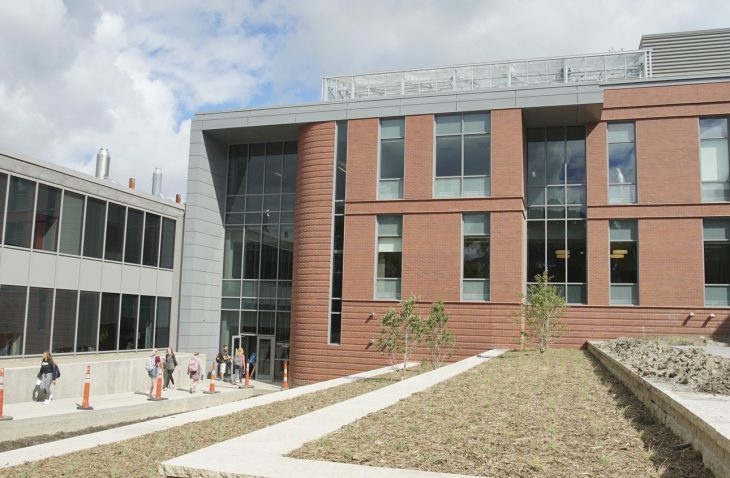University Science Hall Renovation

IMEG provided mechanical, electrical, plumbing, fire protection, and technology engineering design and services, along with construction administration, for Drake University’s new Science Connector Building. The building is located between Olin and Fitch halls and creates a bridge to nearby Harvey Ingham Hall and Cline Hall, linking all four science and math buildings together. This project was a component of the university’s master plan for a $65 million, six-building complex to meet calls for more science- and math-based education and is the second project in Iowa to ever receive Green Globe certification.
To accommodate the Connector Building, an existing greenhouse west of Olin Hall was demolished and existing electrical services between buildings were removed. Additionally, portions of the science departments were reconfigured for the renovation of the existing buildings and streamlined connections between them.
The new Science Connector Building houses teaching labs for biochemistry, biophysics, biology, pharmacy, and kinesiology, offices, a lecture hall, a greenhouse/headhouse on the roof, and various informal gathering spaces. The ground floor also has considerable facilities dedicated to animal research, including animal holding spaces, testing, surgery suite, cage wash spaces, containment room, and animal receiving. These spaces were specially designed to accommodate animals of various habitats and lifestyles that can be adjusted for comfort. Lighting was an essential part of integrating test subjects to the controlled environment of the lab. Special LED lights were employed to mimic the features found in the animal’s natural habitat, including red and white LEDs to induce circadian sleep cycles. The spaces were designed to create a collaborative, problem-solving learning environment.
Lab design was a challenge because of the high air turnover rate needed for clean air and sterile conditions in the animal labs. Many of the lab subjects and animals are extremely sensitive to external factors so the labs need to be sterile and never subject to outside diseases. Sterile cage washing areas, sound proofing, and specialized alarms were all designed to accommodate the comfort and safety of the animals. The animal holding areas are served from a dedicated AHU connected to emergency power and provided with a backup source of heating (boilers) and cooling (rooftop air cooled chiller) in the event the campus utilities go down.
The Science Connector Building received a Two Green Globes rating due to sustainable features such as:
- White roof and concrete to promote indoor cooling
- Energy-efficient windows to reduce the buildings’ electricity use and draw daylight indoors
- Drought-tolerant plantings so that watering is not required
- More than the recommended amounts of insulation in the roof and walls to decrease heating and cooling demands
- Energy-efficient LED lighting fixtures inside and outside the buildings
- Sensors that power down light fixtures when an area is not in use
- Easy access to public transportation and rental bicycles
- Low-flow water fixtures to reduce water usage
- Recycling facilities conveniently located throughout the building
- Excellent indoor air quality
- Extensive use of materials with little to no volatile organic compounds (VOCs)
Demonstrating the university’s strong commitment to sustainable practices and reducing its carbon footprint by 25 percent, the Science Connector Building was designed to meet high standards in energy efficiency and reduce environmental waste.







